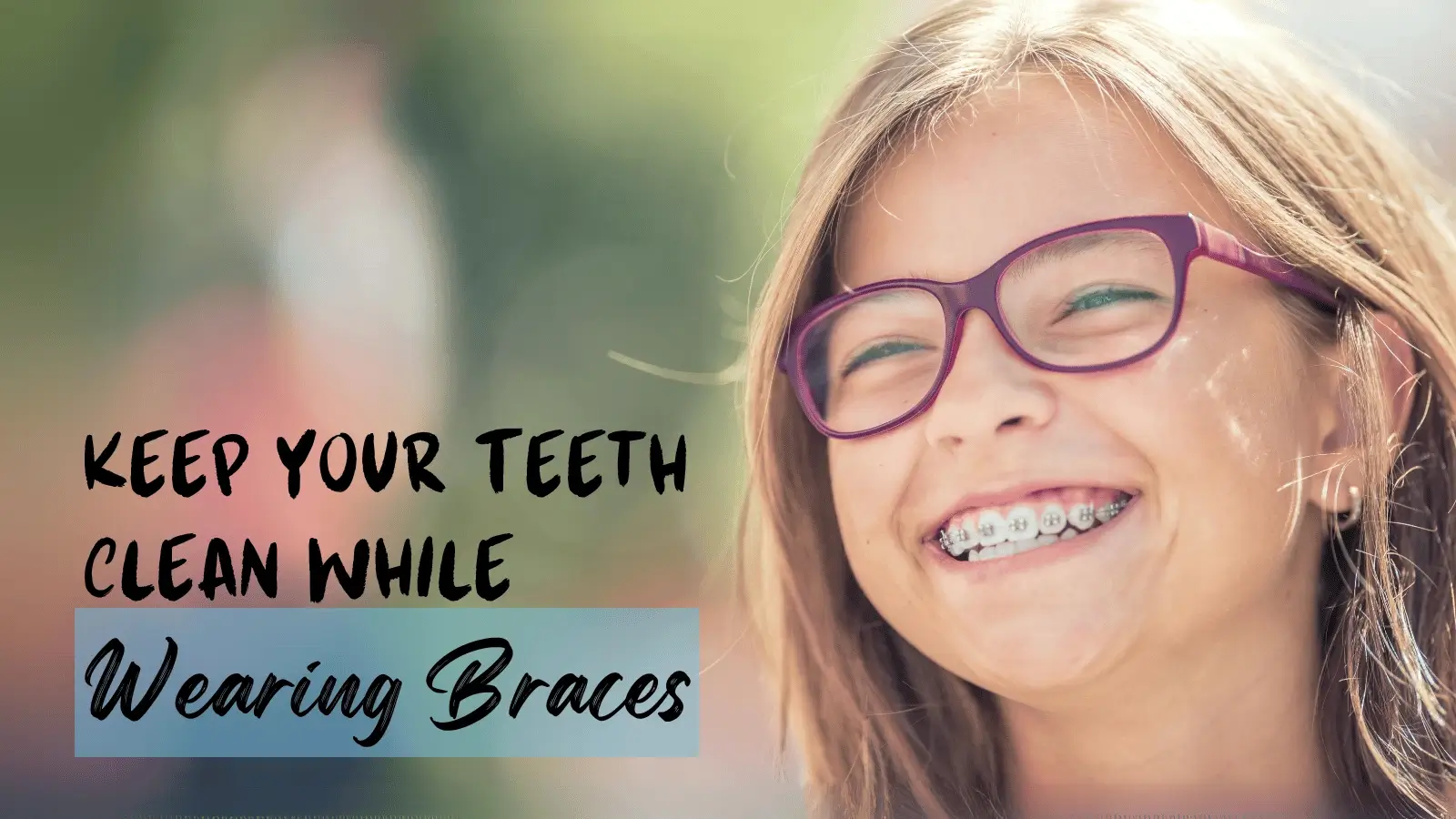We accept Medicare
How to Keep Your Teeth Clean While Wearing Braces?

Wearing braces is an exciting step toward a beautiful smile, but it presents some challenges. Keeping your teeth clean becomes more difficult as braces trap food and plaque in hard-to-reach areas. This is crucial because poor oral hygiene with braces can lead to stains, cavities, or gum disease. Without proper care, your journey to straight teeth may include unwanted dental issues.
Fortunately, maintaining clean teeth with braces is manageable with the right tools and techniques. This blog will cover essential tips for keeping teeth clean and healthy while wearing braces.
Understanding the Challenges of Cleaning Teeth with Braces
Braces come with many obstacles that make cleaning teeth more complicated. The brackets, wires, and bands create plenty of spaces where food particles can get trapped. This buildup increases the risk of plaque, which can harden into tartar and lead to tooth decay or gum disease.
Because dental braces cover parts of your teeth, it is harder to brush and floss effectively. Plaque left behind can lead to problems like white spots, cavities, and inflamed gums.
The structure of braces makes reaching certain areas of your mouth difficult. Traditional brushing may not clean well between the brackets, and flossing around the wires is time-consuming and tricky.
If food gets stuck in your braces, removing it can be difficult without special tools. Because of these challenges, extra care is essential to avoid oral health issues.
Without proper hygiene, common consequences include white spots on teeth, which are early signs of decay. Cavities may also form, and the gums can become swollen or bleed due to inflammation. Braces require more attention to ensure that teeth remain healthy throughout orthodontic treatment.
Step-by-Step Guide: How to Clean Your Teeth with Braces?
- Rinse with Water:
Before brushing, rinse your mouth with water to remove loose food particles trapped by your braces. This quick step will make brushing more effective by clearing away debris that could interfere with cleaning. - Brushing Technique:
- Use a soft-bristled toothbrush or an orthodontic-specific brush.
- Angle the brush at 45 degrees to clean above and below the brackets. This position allows you to reach areas where plaque most likely accumulates.
- Brush each tooth individually, including the gum line. Pay attention to the spaces between your braces and your teeth. Move the brush in small, circular motions to remove as much plaque as possible.
- If you use an electric toothbrush, choose one with a small head designed for orthodontics. The vibrations will help dislodge plaque from hard-to-reach areas. Brush for at least two minutes, covering all surfaces of your teeth and braces. Brushing twice a day is essential, but if possible, brush after every meal to keep your teeth clean throughout the day.
- Flossing with Braces:
Many people skip flossing due to the difficulty of braces. Use floss threaders to guide the floss beneath the archwire of your braces. Once under the wire, floss between your teeth, going down to the gum line as usual.
Alternatively, you can use a water flosser. This tool uses water to clean between your teeth and braces, which can be quicker and more convenient than traditional flossing.
Flossing daily is critical to prevent plaque buildup between teeth, which your toothbrush cannot reach.
- Interdental Cleaning:
Use interdental brushes or picks to clean the areas regular brushing cannot reach. These small brushes are designed to fit between the brackets and wires, making removing trapped food and plaque easier. Use them gently to avoid damaging your braces, and incorporate them into your cleaning routine after meals or snacks. - Rinse with Mouthwash:
After brushing and flossing, rinse with a fluoride mouthwash to help strengthen your enamel and protect against cavities. Mouthwash also helps remove any remaining food particles and freshens your breath. Look for a mouthwash that contains fluoride, as it adds an extra layer of protection to your teeth during orthodontic treatment.
Foods to Avoid (or Eat with Caution) While Wearing Braces
- Sticky and Sugary Foods:
Sticky foods, like caramel or chewing gum, can quickly get stuck in your braces, making them difficult to clean. These foods also contribute to plaque buildup, which can lead to cavities. Sugary foods, like candy or soda, create an acidic environment that can harm enamel. - Hard Foods:
Biting into hard foods, such as nuts, popcorn, or raw vegetables, can damage your braces. Broken wires or brackets disrupt your orthodontic treatment and make cleaning more difficult. Choose softer foods or cut hard foods into smaller pieces before eating to avoid issues. - Tips for a Braces-Friendly Diet:
Stick to soft foods, like yogurt, pasta, or smoothies, less likely to cause damage. When eating hard fruits or vegetables, slice them into bite-sized pieces. This helps protect your braces and makes chewing easier, reducing the risk of damaging the wires or brackets.
Essential Tools for Cleaning Teeth with Braces
- Orthodontic Toothbrush or Electric Toothbrush:
These brushes have smaller heads that can clean around the brackets and wires more effectively than a regular toothbrush. An electric toothbrush, with its oscillating bristles, can reach difficult areas and remove more plaque than manual brushing. - Interdental Brushes:
These small, cone-shaped brushes can clean between the wires and brackets, reaching spots that a regular toothbrush cannot access. Use them daily after meals to remove trapped food particles and keep your braces clean. - Floss Threaders or Water Flossers:
Floss threaders, as well as water flossers, can help you clean between your teeth more effectively. In addition to guiding floss under wires, which makes traditional flossing easier, water flossers also shoot a stream of water between teeth and braces, providing a quicker and more efficient alternative. - Mouthwash:
Using a fluoride mouthwash provides an extra layer of protection against cavities. Fluoride strengthens the enamel, and the rinsing action helps remove any leftover particles after brushing and flossing. - Dental Wax:
Dental wax can protect your gums from irritation caused by braces, making the cleaning process more comfortable. Apply a small amount of wax to any brackets or wires causing discomfort, especially when starting out with braces.
Regular Dental Visits & Professional Cleanings
- Why Regular Checkups Matter:
Regular dental visits ensure your teeth and gums remain healthy during orthodontic treatment. Dentists can spot potential problems early and provide personalized advice for teeth cleaning. - Professional Cleanings:
Even with diligent home care, plaque can build up in hard-to-reach areas. Professional cleanings help remove tartar that regular brushing and flossing miss, ensuring your teeth stay healthy throughout treatment. - Adjustments & Check-ins:
Orthodontic adjustments are necessary to keep your treatment on track, but they also allow your dentist to monitor your oral health. Regular check-ins ensure your braces function properly and any hygiene issues are addressed early.
Keeping your teeth clean while wearing braces requires the right tools, proper techniques, and a consistent routine. Remember to brush carefully, floss daily, and use additional cleaning aids like interdental brushes and fluoride mouthwash. Regular dental checkups and professional cleanings are key to maintaining oral health.
With diligence and the right care, you will ensure your teeth remain healthy, setting the stage for a stunning smile when your braces come off. Remember to schedule regular appointments and consult your orthodontist for advice specific to your needs.



